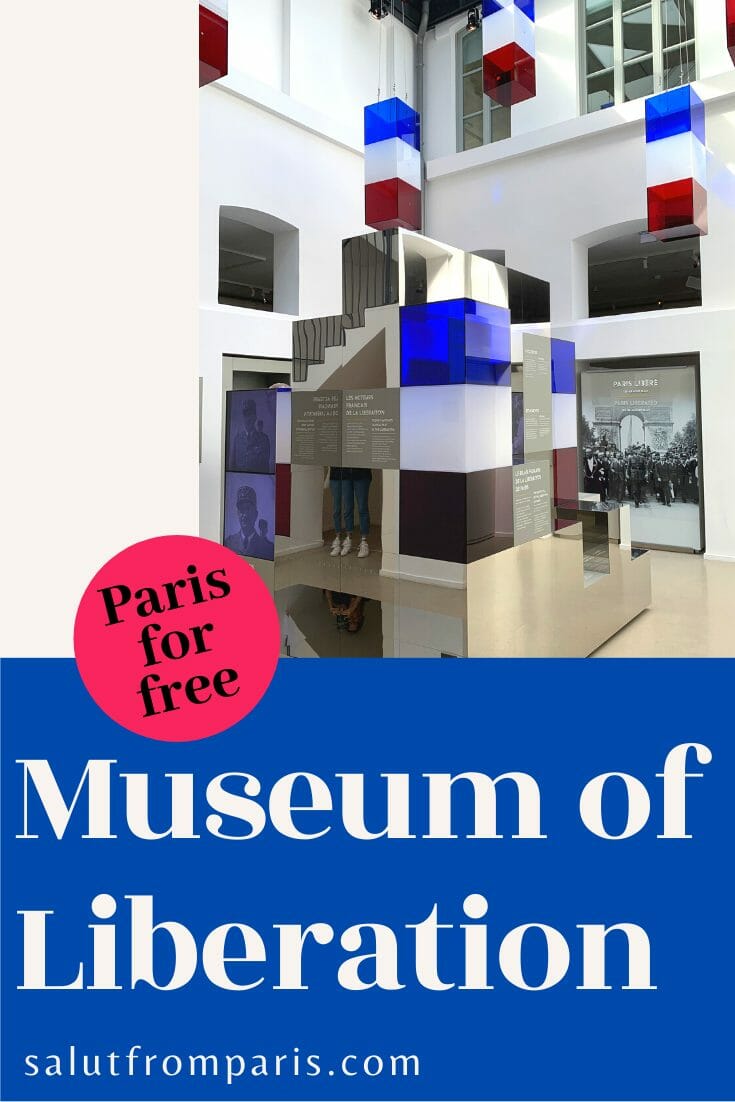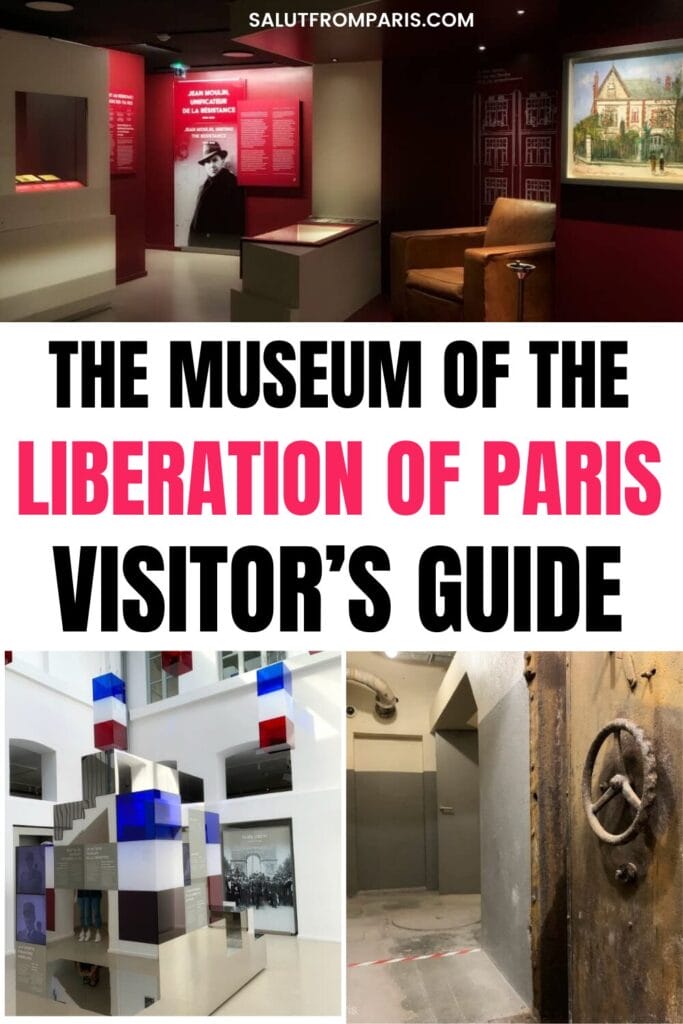The Paris Resistance Museum is an essential destination for anyone interested in learning about the French Resistance and the Liberation of Paris. It explores the lives of two pivotal figures, Jean Moulin and General Leclerc, through an impressive collection of artifacts and exhibits.
I have visited the Paris Liberation Museum multiple times, and each visit has unveiled something new. The museum’s rich historical layers allowed me to make connections I had previously overlooked.
The museum’s chronological layout enhances the understanding of events, making it a captivating place to visit—and revisit. Plus, admission is free!
Located above the secret Resistance bunkers, visitors can also tour these underground facilities to see where operations were conducted.
Whether you’re a history enthusiast or simply seeking a meaningful, budget-friendly activity in Paris, this museum is ideal.
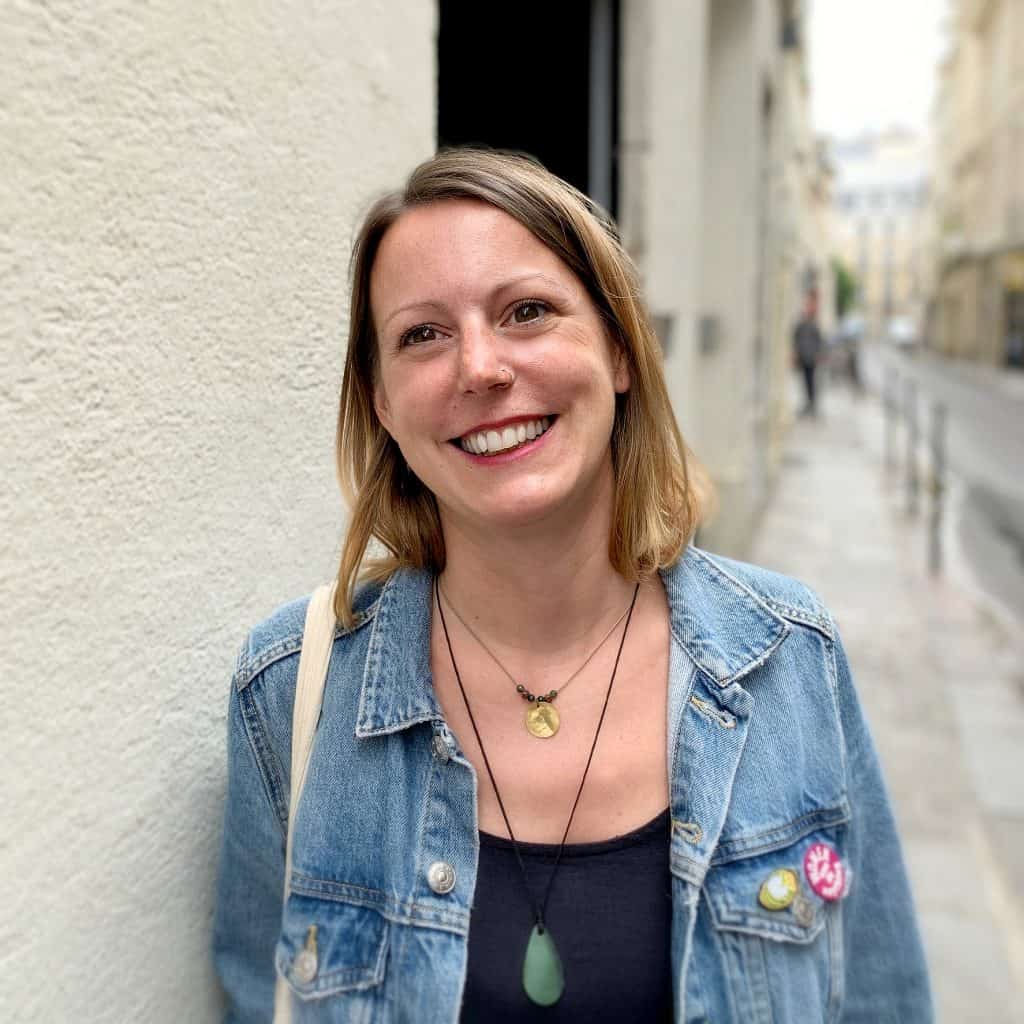
Salut, I am Lena – a travel planning expert and parisienne since 2006 🩷
Should you make purchases through links on this site, I may receive a small commission at no extra cost to you. This helps me maintain my site and cover operational costs. Thank you for your support! 🙂 Learn more
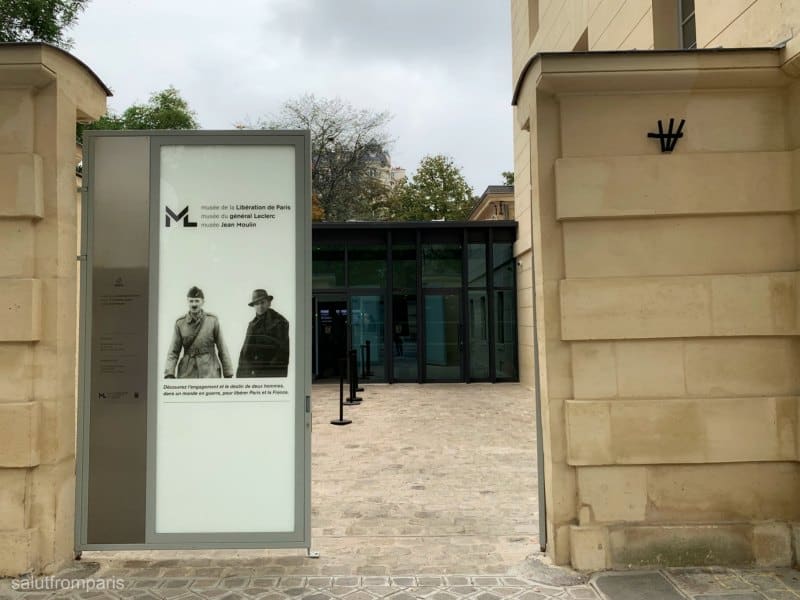
Musée de la Libération de Paris
The official title of the museum is Musée de la Libération de Paris – Musée du Général Leclerc – Musée Jean Moulin. While this title pays homage to its historical significance, many simply refer to it as the Liberation Museum or Resistance Museum.
Opened in August 2019, it is one of the newest additions to the Parisian museum scene. Previously located above Montparnasse train station, it was often overlooked by both visitors and locals alike.
Inaugurated on the 75th anniversary of France’s liberation from Nazi occupation, the new museum found a more prominent setting in a location steeped in history.
Good to know: Entry is free! (Check out our “Paris for free” section!)
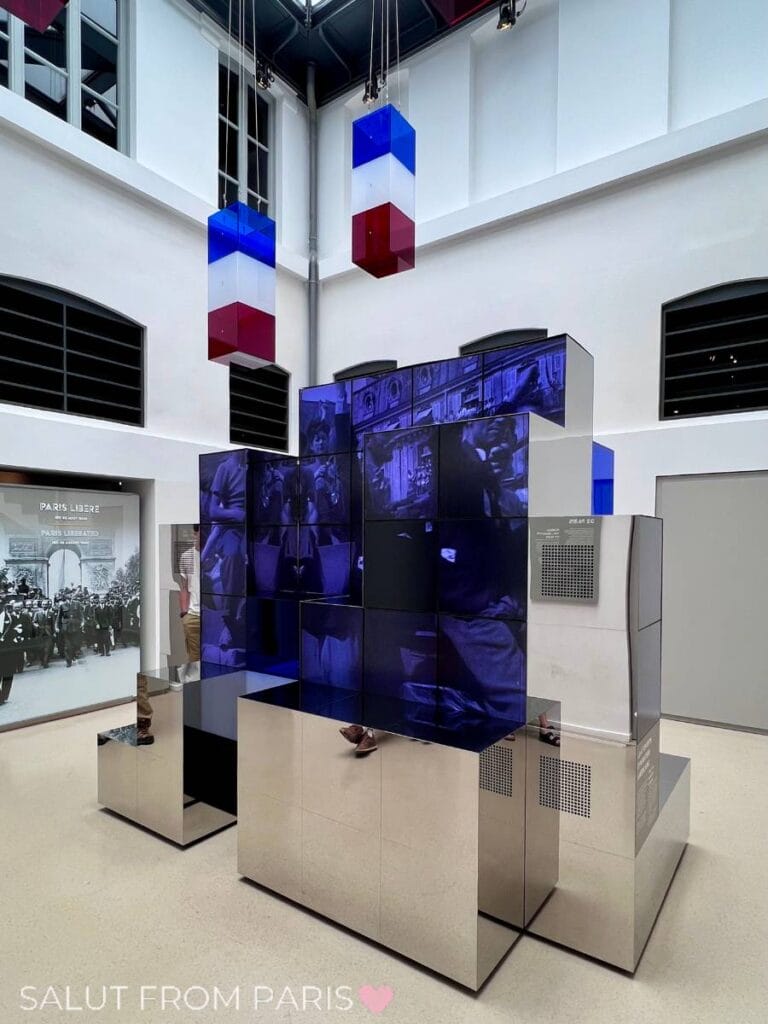
What is the Museum About?
The museum narrates the larger WWII story through the personal experiences of Jean Moulin and Général Leclerc, illustrating how the French Resistance fought to free Paris from Nazi control.
As you navigate the exhibits, it’s like following a timeline that outlines their significant contributions to the Resistance and the city’s eventual liberation.
Their stories guide you through crucial wartime moments, making the experience both personal and profoundly historical.
Jean Moulin
Jean Moulin was a prominent figure in the French Resistance. A French civil servant, he became the first President of the National Council of the Resistance during WWII.
He played a vital role in unifying various resistance factions across France, making them a more formidable force against the German occupation. Tragically, Moulin was captured by the Nazis, tortured, and ultimately died while being transported to Germany.
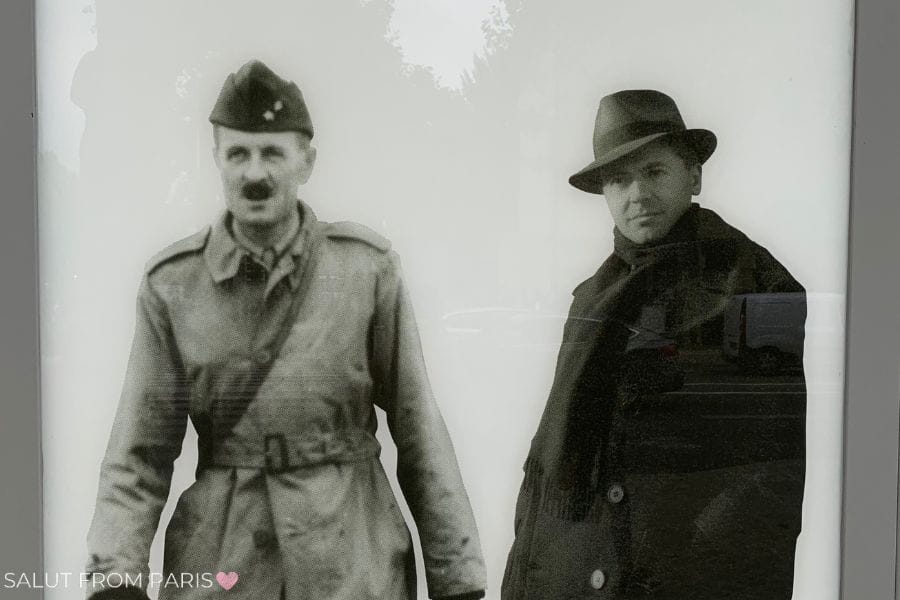
Général Leclerc
Général Philippe Leclerc de Hauteclocque was a Free-French general during WWII. He played a crucial role in the liberation of France, leading his troops during the Battle of Normandy and advancing to liberate Paris.
His contributions were instrumental in defeating the Nazi forces in the French capital.
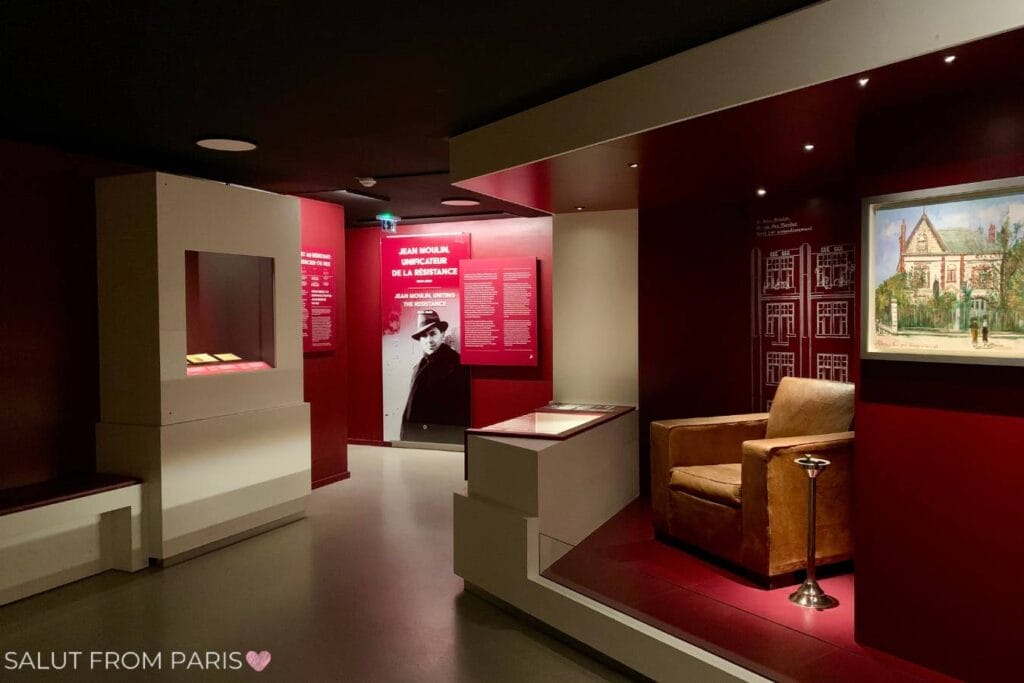
The Bunker of the Liberation Museum
The location of the Paris Resistance Museum was selected with care. In the weeks preceding the liberation of Paris, the French Resistance operated from underground—literally.
They converted sections of the catacombs into a fully operational bunker, complete with phone lines and emergency generators, to plan their strategies against the Nazis. The museum now stands directly above this historic site.
This clandestine facility, situated about 100 steps beneath Place Denfert-Rochereau and the museum, was a restricted area for many years. However, it was restored and opened for tours with the museum’s inauguration in 2019.
My Tip: Be sure to book your bunker visit right when you arrive. It’s free, but spots are limited and available on a first-come, first-served basis!
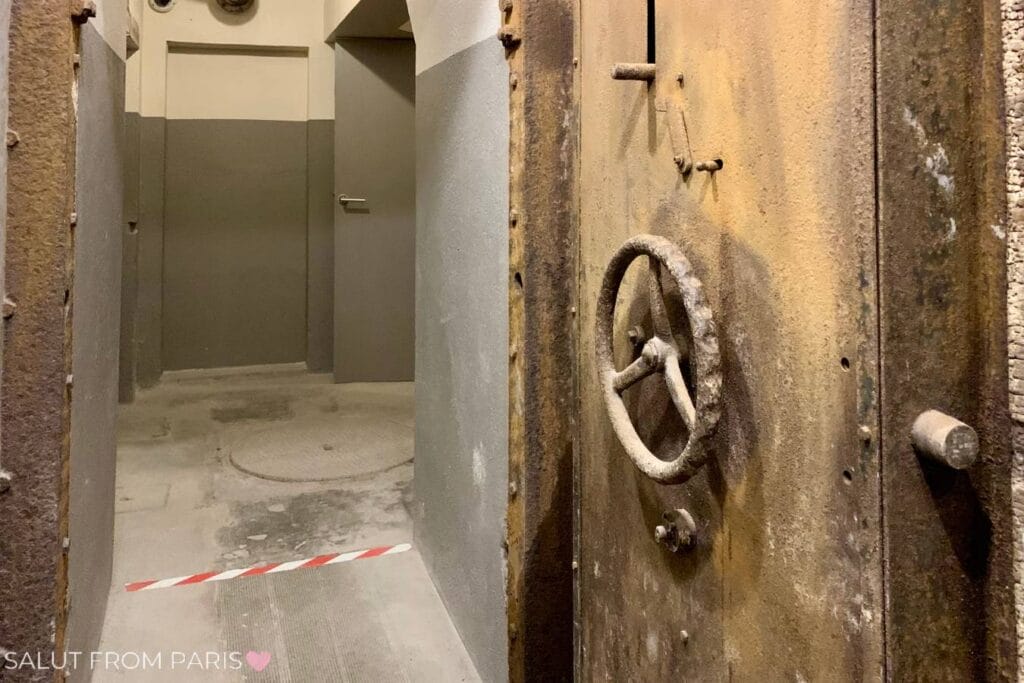
Between my visits, the museum upgraded the visitor experience. They now offer virtual reality glasses, allowing you to see how daily life operated within the bunker during WWII.
This immersive experience provides insight into the daily realities faced by the Resistance as they executed critical operations to liberate Paris. My son came along during my last visit and found it incredibly engaging.
Overall, exploring this bunker adds a new dimension to the museum, bringing history to life, especially knowing that you’re standing on such significant grounds.
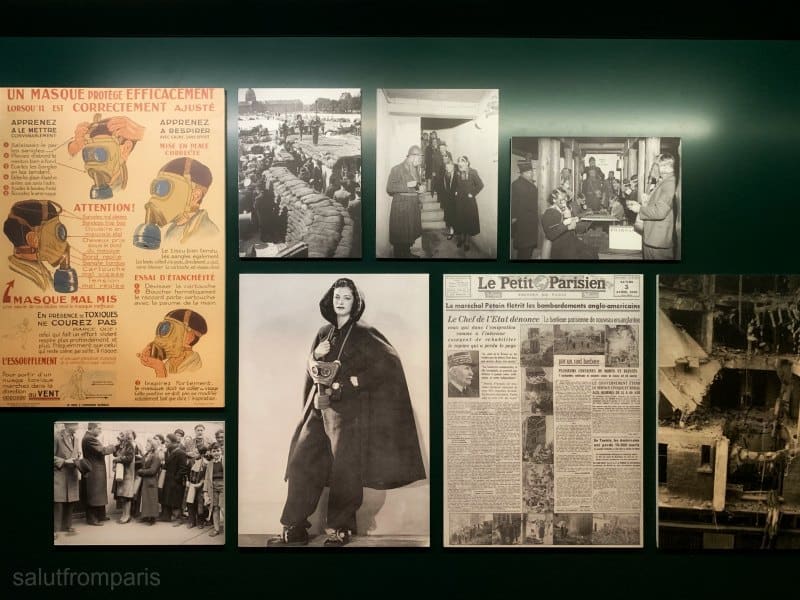
Practical Information
If you’re planning a visit, head over to the 14th Arrondissement. Though not in the heart of Paris, it’s likely you’ll be in the area, especially since the famous Catacombs are just across the street.
Unlike the crowded Catacombs, you can expect minimal or no wait times at the Liberation of Paris Museum.
Opening Times: The museum is open from Tuesday to Sunday, 10 AM to 6 PM. The last entry is at 5:30 PM, and exhibit rooms close at 5:35 PM.
Address: 4, Avenue du Colonel Henri Rol-Tanguy, 75014 Paris.
Access: The nearest Metro and train station is Place Denfert-Rochereau, served by Metro Lines 4 and 6, as well as RER B.
Admission: Entry to both the museum and the bunker is free. No reservations are required for the museum, but you need to sign up at reception for the bunker tour. Tours run several times a day, with slots available every 30 minutes.
Visit Duration: Plan to spend between 1.5 to 2 hours exploring both the museum and the bunker.
Accessibility: The museum is fully accessible, but the bunker is not (there is no elevator). For those unable to access the bunker, a virtual 360° tour is available on a tablet.
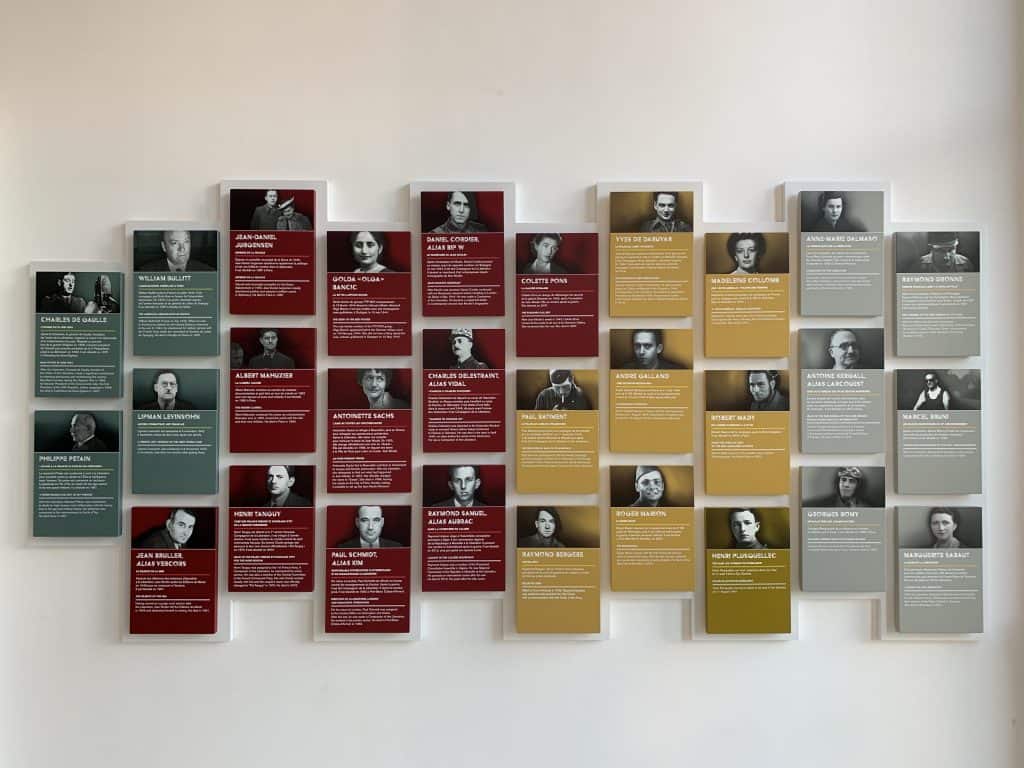
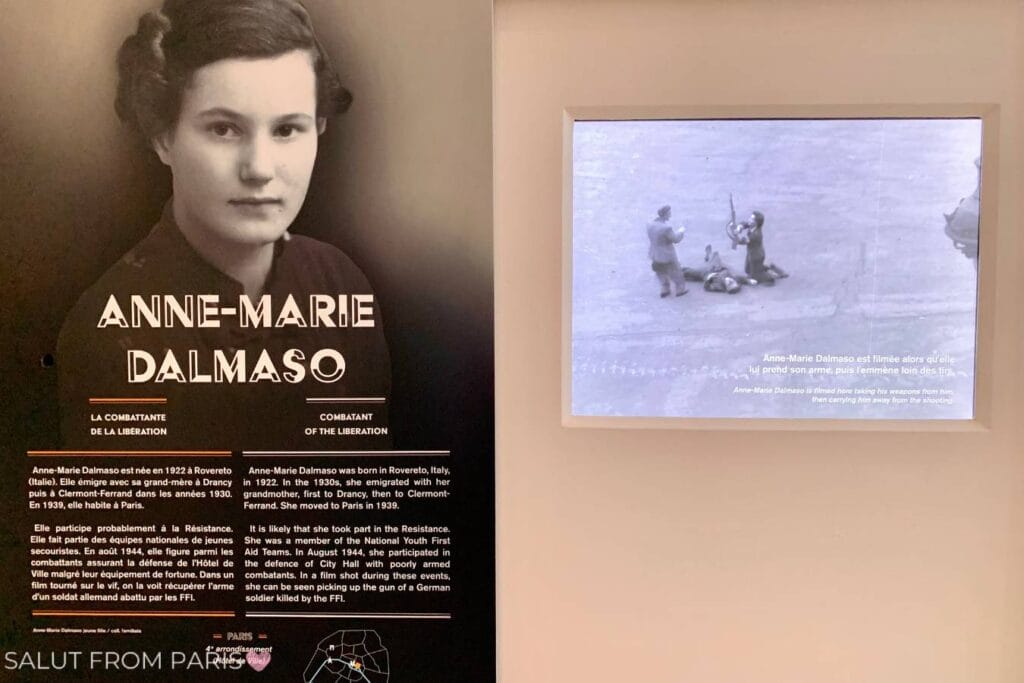
More Tips: Explore the Neighborhood
If you find yourself in the area, take the opportunity to explore a less touristy side of Paris. Here are a few of my local favorites:
Rue Daguerre: A pedestrian street lined with cafés, restaurants, grocery stores, and delis.
The Catacombs: Paris’s largest burial site and a popular attraction.
Le Petite Ceinture: An abandoned railway transformed into a picturesque urban walking trail. (read more: La Petite Ceinture: Discover Paris’ Abandoned Railway (+ Insider Tips)
The Vanves Flea Market: A bustling market filled with vintage treasures and antiques for those on the hunt for bargains. (read more: Vanves Flea Market – A Hidden Gem for Vintage Fans)
Rue des Thermopyles: A charming, ivy-covered street perfect for leisurely strolls and delightful photographs.
Parc Georges Brassens: A peaceful park with a weekend market offering rare books and unique literary finds.
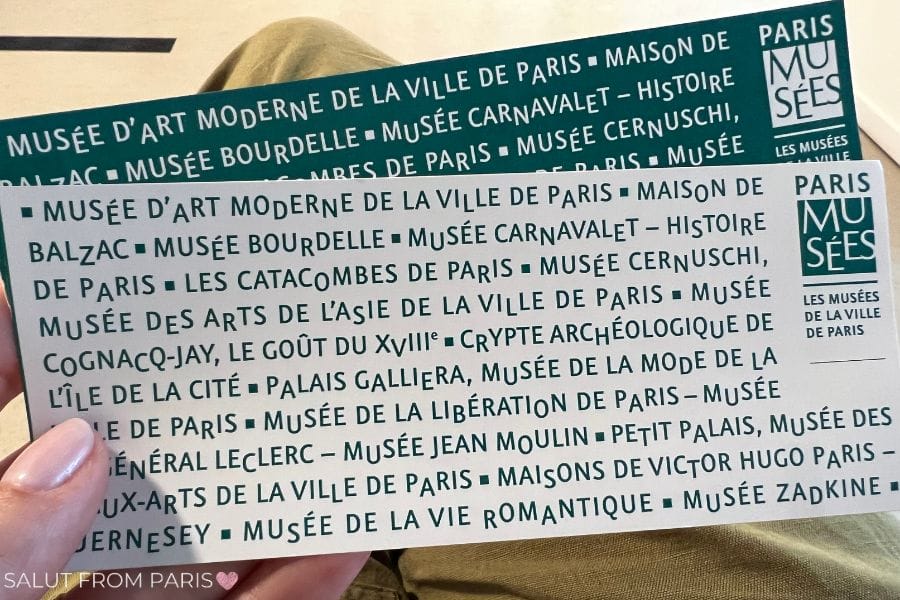
Wrap Up: Why Visit the Paris Resistance Museum?
The Paris Resistance Museum is a crucial stop for anyone wishing to grasp the history of Paris during WWII. Through the compelling narratives of Jean Moulin and General Leclerc, along with an immersive tour of the underground Resistance bunkers, the museum provides a profound insight into the struggle for liberation.
With free entry, engaging exhibits, and virtual reality experiences, it offers an affordable and meaningful way to spend time in the 14th arrondissement.
Conveniently located near Place Denfert-Rochereau, the museum pairs well with nearby attractions like the Catacombs or a leisurely stroll along Rue Daguerre. Be sure to take your time and immerse yourself in the rich history of this hidden gem in Paris.




Parisienne since 2006 🩷
Expert in: Parisian Life &
French Culture, Travel
Planning, Crochet & Food and Drinks
Join me on Facebook for updates and news about Paris.
Must-Have Paris Travel Essentials
International Travel Adapter
Portable Charger for Your Phone
PS: Check out these posts; they will help you plan your trip to Paris
Like it? Pin it for later!
